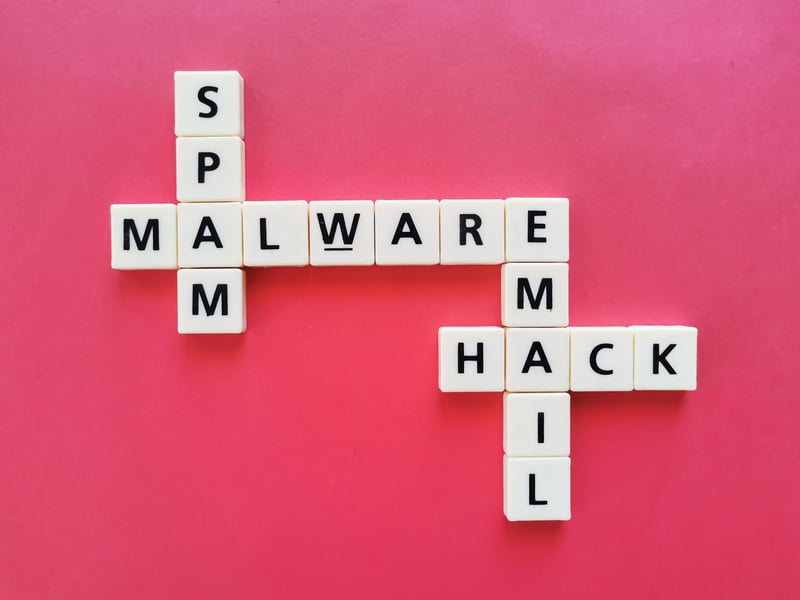Valeo Networks Announces New President
Rockledge, FL (December 19, 2022) – Valeo Networks, a leading Managed Security Service Provider (MSSP) headquartered in Rockledge, FL announces that...
5 min read
Valeo Networks : Aug 17, 2023 4:00:00 AM
Cybercrime inflicts a heavier financial toll on its victims than natural disasters worldwide. Perpetrators view it as a lucrative illicit path, often facing minimal consequences for their actions. The only tool that private industry has to combat this problem, including network security and managed IT service, is to learn the tactics of the hackers and attempt to prevent them from getting away with them.
Knowing what kind of things hackers look for when they conduct their attacks as well as where your vulnerability points are, can help keep you more protected than you otherwise might have been. Let's explore the key aspects that hackers focus on and how you can bolster your protection in the face of evolving cyber risks, including enhancing your cyber threat protection measures.
While it may seem bothersome at times, there are compelling reasons why technological systems and managed IT services insist on users using strong passwords during account sign-ups. Weak passwords remain a major vulnerability issue within many networks and systems, significantly impacting network security. Certain types of passwords are deemed "weak" because they are too easy for a hacker to figure out and exploit, posing a severe cyber threat protection concern.
This includes common mistakes such as:

All of these issues are potentially concerning because they leave you vulnerable and exposed to the possibility of having your account hacked by those trying to get at your information in the context of cyber threat protection. Never leave yourself open and vulnerable like that. You can protect yourself better from this vulnerability by using multi-factor authentication and strong password generators, a strategy strongly supported by managed IT services. This can make the hurdles to cross a lot higher for potential hackers to get over in their attempts to compromise network security.
One of the primary avenues attackers exploit to target computer systems, a critical concern in network security, is through outdated operating systems with vulnerabilities. These weaknesses can leave your systems, managed under IT services, wide open to a myriad of attacks, ranging from malware infections to data breaches and other malevolent activities. It's essential to stay vigilant and keep your operating systems up-to-date to bolster your defenses against potential cyber threats, including cyber threat protection.
A key vulnerability point within an outdated system, particularly in the context of managed IT services, is the fact that it tends to remain unpatched with the latest powerful updates. Software patches and updates, crucial for cyber threat protection, are released by the creators of the software when they realize that there is a potential issue with the product that they have released. As such, these patches are meant to address known issues in network security. If you fail to keep your software patched and updated, you are inviting hackers in through the front door.
Cybersecurity, a cornerstone of managed IT services, continues to advance with each passing year, and you need to keep up with the latest trends and advances in cyber threat protection. Legacy systems might be more familiar and easier to use, but they often lack some of the latest security features necessary to keep hackers out. Always install the latest patches and updates to your systems within a timely manner to keep your system as safe and secure as possible.
Anyone can become the victim of a phishing or social engineering attack. Many of us like to believe that we could never personally fall victim to something like this, but millions of people do.
Phishing attacks are the most common type of cyberattack out there. Typically, this kind of attack is conducted via e-mail, but there are other ways that it might occur as well. The recipient of the e-mail or other form of communication will be asked to provide personal information about themselves that ought not to be able made available to the public.
How cybercriminals use cunning tactics to succeed in their scams:

Another concern is social engineering attacks of all kinds. Phishing attacks are just one example of a social engineering threat. There are other schemes that criminals come up with to try to get their victims to behave in a specific way. It is all about using human psychology against the victims of these attacks.
A few examples of social engineering attacks can include:
Anyone can become a victim of these types of scams. It is vital to train employees about how they work and how they should react if they receive a communication that they believe could be part of a scam.
In many ways, it might seem like a logical thing to try to connect as much of one's internal network together as possible in a managed IT service environment. Information can be passed through the network seamlessly in this way, and that might help speed up the rate at which various communications reach their intended targets. However, there are risks to having everything stacked up on the table like that as well, especially in terms of network security.
For example, the lack of network segmentation may mean that a single cyberattack may hit your organization in a deeper and more impactful way than it otherwise would have, compromising cyber threat protection.
Think of your network as a flat surface in the context of network security. If it is all centralized, then there is more surface area for hackers to potentially attack. However, when you decentralize the system and provide adequate network segmentation, part of managed IT services, you can reduce the total surface area of your network and make it less likely that critical pieces of your data infrastructure will be hacked, enhancing cyber threat protection.
Hackers, always on the lookout for the biggest and most valuable systems that they can find to exploit, represent a constant cyber threat. Don't give them a big and juicy target to go after in your managed IT service setup. Limit your exposure by segmenting your network into smaller and more secure sizes, a key strategy in network security.
Unfortunately, not every employee is adequately trained on how to protect the company they work for from the possible threat of a cyber attack in the context of network security, managed IT services, and cyber threat protection. This is particularly troubling because employees are the first line of defense against cyber threats in any cyber threat protection strategy. They are the ones who are likely to receive a phishing e-mail or some other attempt to get at the company's valuable information.
That's why the responsibility lies with you to equip your employees with the necessary training in network security and cyber threat protection to ensure the safety and security of your business against potential threats it may encounter within a managed IT service framework.
An estimated one-third of companies don't provide any kind of cyber security training at all, which is a significant oversight in the realm of network security and cyber threat protection. That is unacceptable in today's world of evolving cyber threats. Not only should employees be trained on cyber security within managed IT services, but that training should be a continuous process where they continue to receive new training and information on network security and cyber threat protection. Cybersecurity threats are always evolving, and the training for how to handle those threats within managed IT services should evolve as well. When employees are trained on the latest threats and how to handle them, they are better equipped to ward off those potential threats in the field of network security and cyber threat protection.
Given the countless cybersecurity and network security threats that your business may face, it makes perfect sense to be on the lookout for a managed service provider to provide you with the opportunity to keep the worst threats at bay. Valeo Networks stands out as an industry leader, offering top-notch managed IT services, network security, and comprehensive cybersecurity protection.
With a vigilant awareness of the latest cyber threats and a continuous adaptation to emerging dangers, our expert team takes the burden of cyber threat protection and staying up-to-date off your shoulders. Detecting threats that might have previously slipped by unnoticed, we respond in real time, ensuring you're never left vulnerable. By entrusting us with cybersecurity and cyber threat protection, you can focus on business growth, relishing the peace of mind our services bring. Your security is our utmost priority, and putting your faith in our team is a valuable investment. Embrace our support and safeguard your business today!


Rockledge, FL (December 19, 2022) – Valeo Networks, a leading Managed Security Service Provider (MSSP) headquartered in Rockledge, FL announces that...

Rockledge, May 19, 2016 — Valeo Networks, LLC has been selected for the 2016 Best of Rockledge Award in the Computer Service category by the...

Risk management is the process of identifying all possible risks to your business and building a plan to prevent or counteract them. This includes...

With cutting-edge technology and quality customer service,
you’ll find everything you need to help your company soar
with Valeo Networks.
1006 Pathfinder Way
Rockledge, FL 32955
Business Hours:
M-F: 8AM-9PM
© 2025 Copyright Valeo Networks. All Rights Reserved.